Digital learning is taking off. Some estimates see the online education market growing to $350 billion in the next three years. From online learning software to video conferencing tools and virtual tutoring—not to mention the accelerating changes that come with quantum computing, artificial intelligence, and other technologies—the landscape has radically changed in the past two years. Colleges and universities are scrambling to keep up.
But when it comes to higher education and digital learning, one key point often gets overlooked. It’s that technology is only part of the puzzle. Equally important is the institutional mindset higher education institutions have when shaping the direct-to-consumer (DTC) learning experiences today’s students are yearning for.
For too long, colleges and universities have stood on the sidelines and watched as new forms of credentialing and certification have taken off in the corporate setting. Delivering on digital education today means developing the agility to respond to the demands of today’s learners while meeting the disruptive workforce dynamics that require innovative approaches to education.
Explore our podcast about Transforming Digital Education
In short, higher education needs to start thinking like a digital learning company. Here are five key steps to doing that:
- DTC means system-wide change.
With roots in the Middle Ages, it’s hardly surprising that today’s higher-education institutions are resistant to change. Initiatives that would be table stakes in other industries—like selling the campus experience or clearly spelling out the investment’s value for the learner—can still seem novel in an academic environment.It’s why one of the hardest truths for colleges and universities to accept is that the digital learning transformation takes more than just adding a layer of technology. The change has to be systemic, rippling across all aspects of the institution in ways that fully account for the newly extended lifecycle of education. We have to let our traditional mindsets get unsettled by the implications of the latest insights into the consumer behavior of today’s learners.
Thriving in today’s higher learning environment means making decisions fast and connecting traditionally siloed campus functions—from recruitment and admissions to financial aid and academics. Leveraging this agility will drive not just your ability to adapt to the fast-evolving needs of today’s learners, but also to design new experiences that align with the journeys today’s students are actually taking.
- From static to dynamic:
Transform your institution. Even now, barring a handful of Institutions, most of Higher education continues to produce graduates molded for thirty-year, same-function, single-employer careers. Today’s students and employers don’t live in that world.In 2020, the median length of time that workers had with their current employer was 4.1 years, a figure sure to have dropped further with the Great Resignation. This is a world of incessant change requiring near-constant upskilling and retooling.
To keep higher education relevant, you need to teach the competencies required to thrive not just today but tomorrow. This means more than just developing new programs, courses, certificates, and degrees. You also have to keep these new formats fresh and aligned with the latest developments in the workplace.
- Invest in data modernization.
Look beyond the glossy direct-mail brochure. Predictive analytics gives you new and more efficient ways to find prospects. A typical public university can spend 14% of its marketing and recruiting budget on student lists each year, but an upfront investment in the latest data analytics capabilities gives you a foundational strategy for finding the right students for years to come.As higher education strives to meet the evolving needs of students and employers across an ever-shifting landscape, moving beyond freshmen to target lifelong learners and upskilling professionals becomes an essential ingredient for continued growth. The insights that come with automation and robust data analytics platforms are key to finding the lifelong learners your university seeks.
A great example is St. Mary’s College in Maryland. Using predictive analytics, they increased their applicant pool and developed data-based strategies to increase enrollment.
- Get with the platform.
Just like the boot camps, higher education institutions are racing to launch new alternative credential initiatives to provide adult learners with the skills they need to advance in their careers. The critical advantage these new platform options provide lies in their ability to build momentum and scale in an affordable manner.For instance, many of the Unicorns—such as Simplilearn or Upgrad—are more than just venues for online classes; they provide a cloud-based software-as-a-service (SaaS) platform to colleges and universities and as a result help them scale their distribution to newer segments of life-long learners.
But if this agile approach to education fits the bill when it comes to affordability, too often the latest programs in higher education focus on quantity over quality. With the pandemic having served as a real-time laboratory for studying how learners use the latest technologies, it’s time to take what we’ve learned and design the programs that meet learners where they want to be met. Post-pandemic classrooms need to provide students with value that supports their day-to-day experience.
Handpicked Related Content
Metaverse – the next generation classroom- Build out your core
It’s no secret what drives the growth of leading education technology solution companies. They relentlessly iterate on their strengths. That’s why nobody’s expecting Apple to put out a social network anytime soon or Netflix to design a smartphone.EdTech knows its sweet spots too. Disruptors offer fast, dirt-cheap, and job-ready curriculum options. Eight months or less with fewer than ten study hours a week: that’s how long Coursera estimates students can complete a Google Professional Certificates program.
Today’s higher-education disruptors need the same mindset to fully tap today’s demand. With two-thirds of students nineteen to thirty years old seeing a college degree as a good investment, higher education’s brand value remains strong. Today’s challenge involves making it relevant.
Focused on building momentum and scale, higher education today can capitalize on its pedagogic advantages and compete with the lean operations of its online competitors. But this takes more than just reimagining a DTC experience aimed at your traditional students.
Thinking like a tech company means fundamentally reshaping your institution’s mindset and planning for a future in which everyone the world over is a potential learner.











